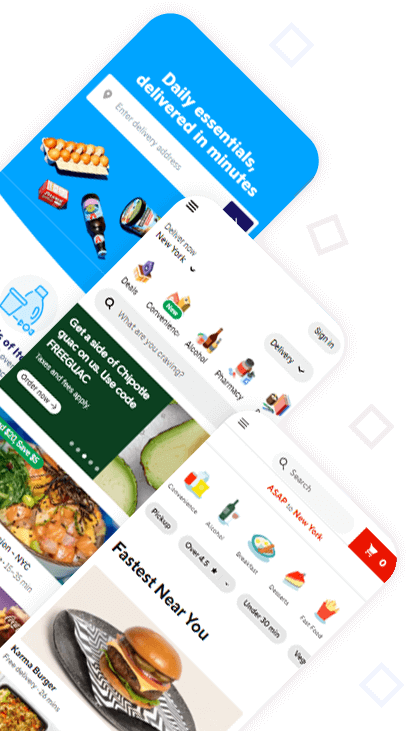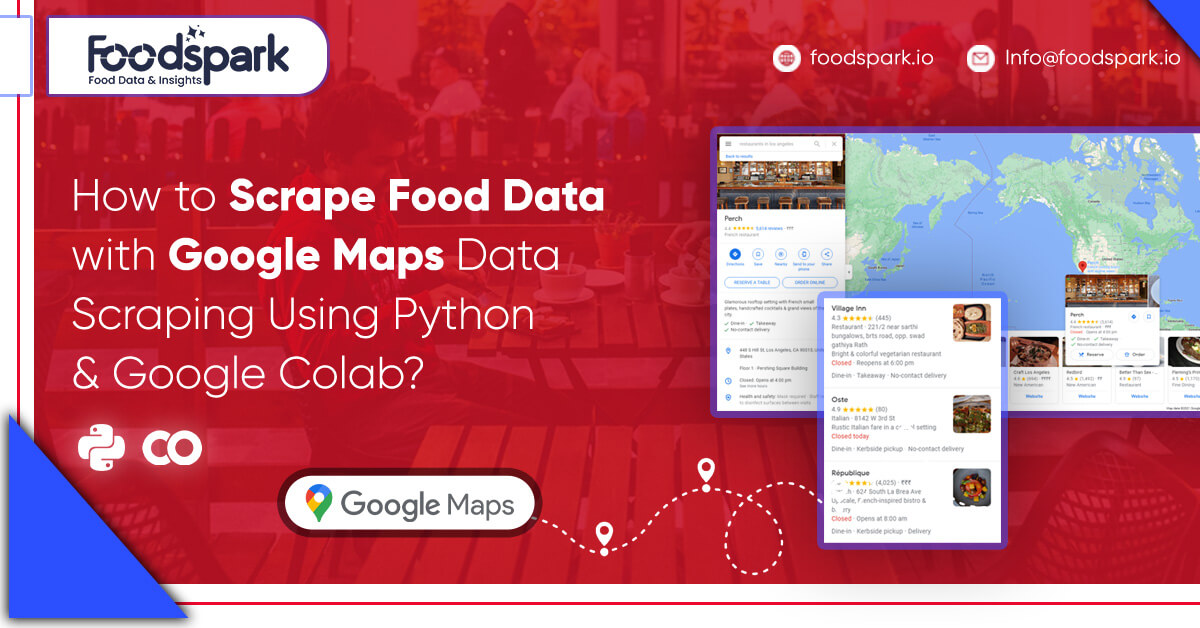Let's talk!
We'de love to hear what you are working on. Drop us a note here and we'll get back to you within 24 hours.

We'de love to hear what you are working on. Drop us a note here and we'll get back to you within 24 hours.

Web scraping involves extracting data from a website. The data is then transformed into a user-friendly format. Like, a spreadsheet or an API.
While doing it manually is possible, people prefer automated tools. It is due to their cost-effectiveness and faster processing capabilities.
Nevertheless, web scraping can be challenging. This is because of diversity structures and layouts of websites. It leads to variations in the functionality and features of web scrapers.
As a result, web scraping can be a complex task. Thus, it requires careful consideration.
Food delivery platforms & mobile apps contain an extensive array of listings. Countless users use this listing. For restaurant and food delivery entrepreneurs, this food data holds significant importance.
As mentioned before, it provides them with comprehensive insight. Details provided are about their competitors’ activities and their customers’ preferences.
The initial step that firms can take is to track the market through food delivery data. It helps them to achieve their objectives. Food delivery platforms contain valuable data that firm owners can extract and analyze. Some of the key data points they can collect from these platforms include:
To gather specific data required, a scraping tool like Foodspark becomes indispensable. It enables users to organize the data in a structured format.
Also, it provides management with a more precise informative overview of collected data.
Google Maps Data Scraping involves extracting data. This data is from an extensive collection.
This data encompasses a wide range of details including:
By utilizing Python & Google Colab, we can automate the process of extracting data.
Examining Customer Sentiment
Customers play a vital role in the success of any business, serving as its lifeblood. Thus, prioritizing their satisfaction and loyalty is of utmost importance for firms. Although restaurant owners cannot read their patrons’ minds, they have a valuable alternative. The solution is food delivery data.
By analyzing reviews and ratings, businesses can gain valuable insights. They can know what the average consumer thinks about their competition. This data allows them to make informed decisions and respond effectively. Furthermore, it provides a means to understand the weaknesses of restaurants and delivery services in the area, empowering owners to improve their offerings and attract new customers.
Enhancing Pricing Strategies
Establishing the right pricing strategy is critical for the success of any firm. Customers might seek better alternatives elsewhere.
Customers may develop this perception if they find a restaurant’s prices to be excessive in comparison to the value it offers. On the other hand, setting low prices can raise doubts about the quality of the menu items. This can lead potential customers to choose another option.
Utilizing food pricing data scraping from delivery apps and platforms strengthens firm owners. It helps them to compare their prices with similar establishments.
Food delivery data provides restaurant owners with valuable insights. This data is about their most valuable customers and their preferences.
This data plays a crucial role in formulating impactful marketing strategies that draw in new clients. Additionally, it assists restaurant entrepreneurs in crafting compelling campaigns to promote their business effectively.
Now they can better understand the target audience and customize their messaging. Also, it helps them build stronger connections with their customers.
Offering discount codes & loyalty rewards is an excellent way to entice new customers. Also, it fosters loyalty among existing ones.
Analyzing the types of promotional codes offered by competitors can inspire firm owners. It helps to devise more attractive & appealing ideas to keep their clients satisfied.
Also, show appreciation for their patronage.
Image address:
Firms can keep an eye on both established & upcoming restaurants by restaurant scraping apps.
Firms can expect shifts in the local industry landscape by staying up to date. Also, make necessary adjustments to stay competitive.
Requirements:
Before digging into the scraping process, certain prerequisites need to be in place:
Step 1: Setting up Google Colab:
Google Colab is an excellent platform for running Python code in the cloud. It provides a free environment with access to various Python libraries. Begin by visiting https://collab.research.google.com/ . Then, log in with your Google account.
Step 2: Importing necessary libraries:
In Google Colab, we have access to many Python libraries pre-installed. Import the required libraries for this project:
import requests
from bs4 import BeautifulSoup
import json
Step 3: Understanding the Google Maps URL structure:
To scrape food data, we need to understand the URL structure of Google Maps. It is especially for restaurant searches. When you search for restaurants on Google Maps, the URL looks like this:
https://www.google.com/maps/search/restaurants/@latitude,longitude,zoom/data=!3m1!4b1!4m8!2m7!3m6!1srestaurants!2slatitude,longitude!3szoom!4m2!3m1!1srestaurant!4m2!1m1!4e2
Here, latitude and longitude correspond to the geographic coordinates of the location you want to search, and zoom represents the map’s zoom level.
Step 4: Scraping restaurant data:
Now, let’s define a function to scrape the food data using Google Maps URL:
def scrape_google_maps_data(latitude, longitude, zoom):
url = f"https://www.google.com/maps/search/restaurants/@{latitude},{longitude},{zoom}/data=!3m1!4b1!4m8!2m7!3m6!1srestaurants!2s{latitude},{longitude}!3s{zoom}!4m2!3m1!1srestaurant!4m2!1m1!4e2"
response = requests.get(url)
soup = BeautifulSoup(response.content, 'html.parser')
scripts = soup.find_all('script')
for script in scripts:
if 'window.APP_INITIALIZATION_STATE' in str(script):
data = str(script).split('=', 1)[1]
data = data.rsplit(';', 1)[0]
json_data = json.loads(data)
restaurants_data = json_data[3][6]
for a restaurant in restaurants_data:
name = restaurant[14][84]
location = restaurant[14][86][0]
rating = restaurant[14][47][0]
reviews = restaurant[14][48]
print(f"Name: {name}")
print(f"Location: {location}")
print(f"Rating: {rating}")
print(f"Reviews: {reviews}\n")
Step 5: Running the scraper:
Now, let's run the scraper function. It is by providing the latitude, longitude, and zoom level for the desired location:
latitude = 37.7749 # Replace with the desired latitude
longitude = -122.4194 # Replace with the desired longitude
zoom = 15 # Adjust the zoom level as needed
scrape_google_maps_data(latitude, longitude, zoom)
Python and Google Colab streamline & make the process of Google Maps data scraping efficient. Extracting relevant food-related data enables firms to get useful insights. This data is about the local food scene, competitors, and customer preferences. But it is essential to adhere to Google’s data usage policies and rate limitations.
The goal is to avoid potential issues. With this powerful scraping technique at our disposal, a multitude of possibilities emerges, particularly in the food industry.
Thus, begin your data scraping journey today. And unveil the hidden gems of the local food landscape using Google Maps data scraping & Python.
January 21, 2025 B2B marketplaces use data collection to expand and maintain relevance in the food industry. Organizations can improve...
Read moreJanuary 2, 2025 Web scraping has now become an important strategy in the accelerating world of e-commerce, especially for businesses...
Read more